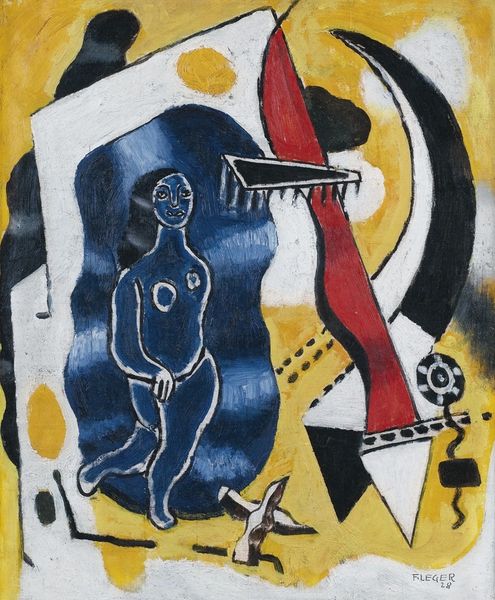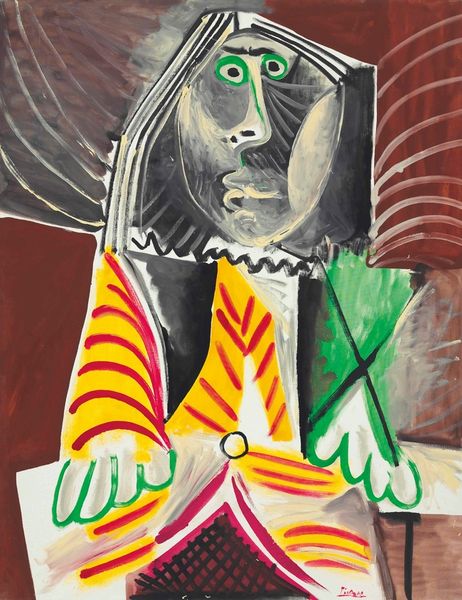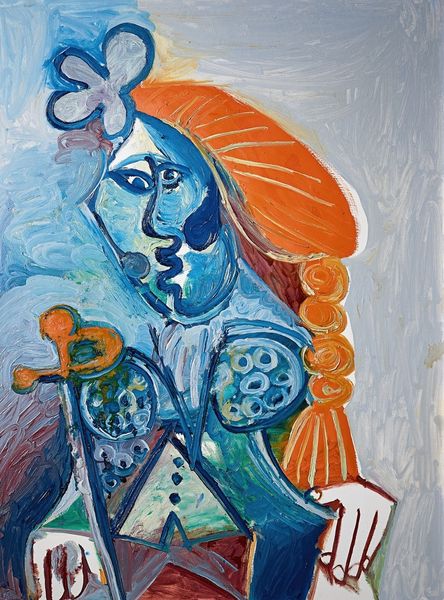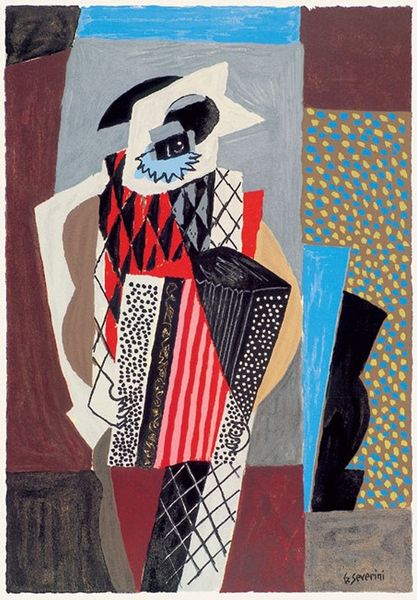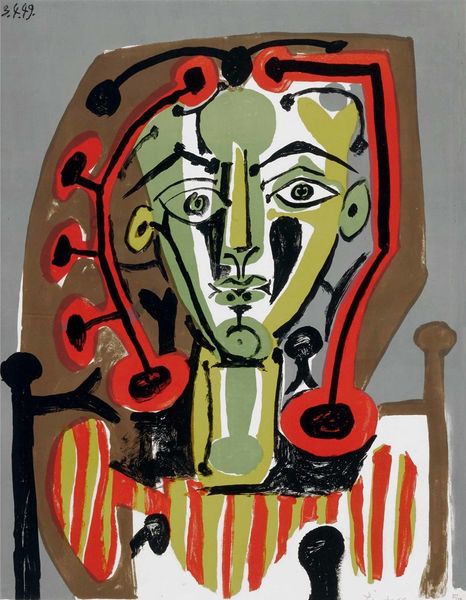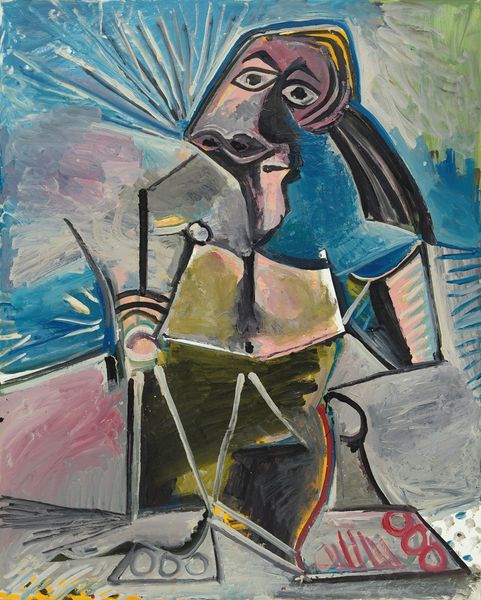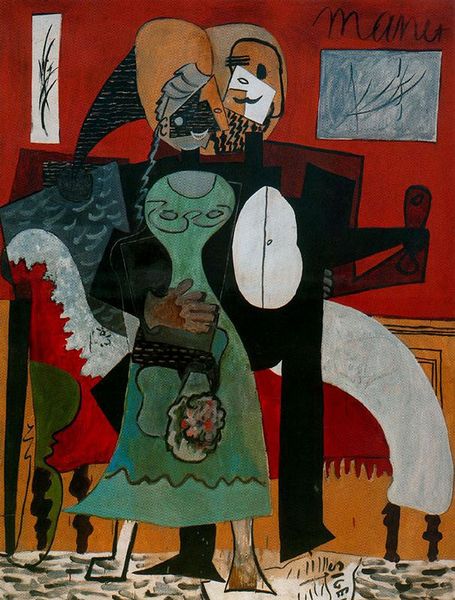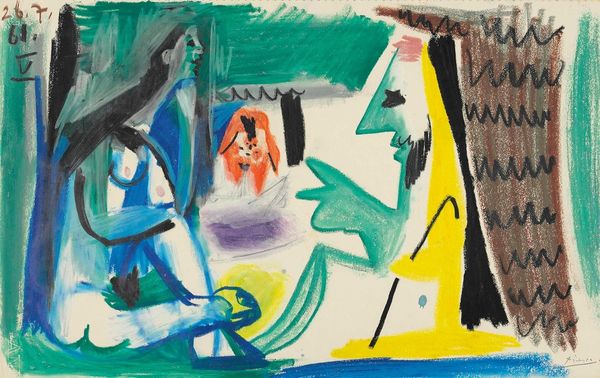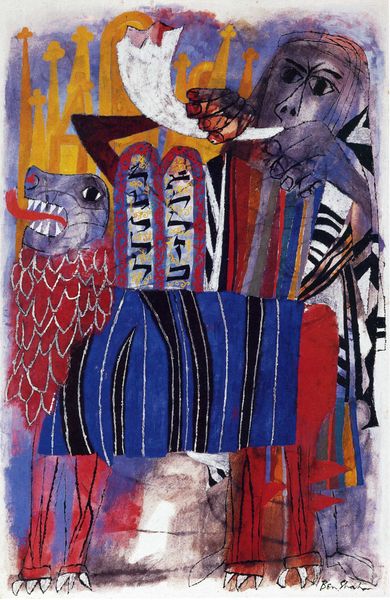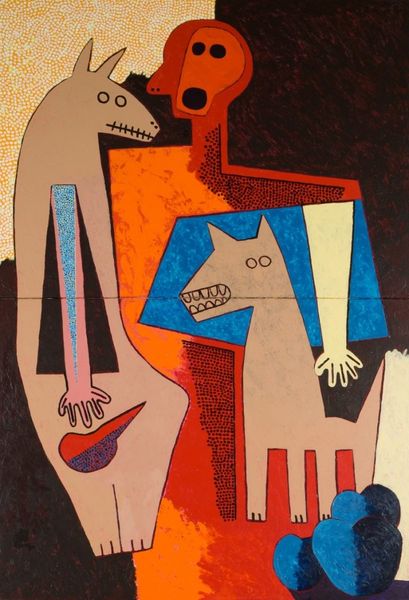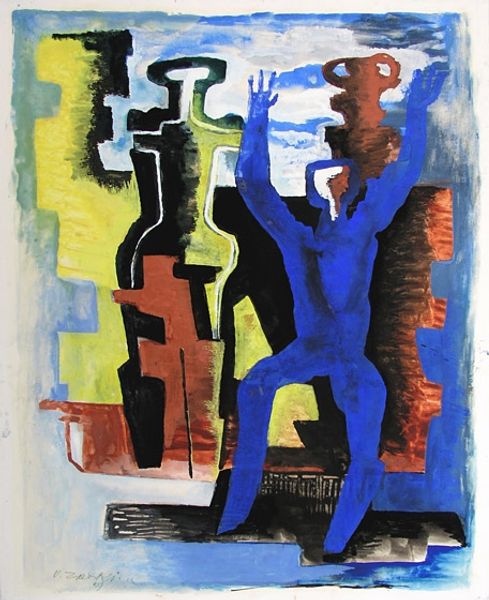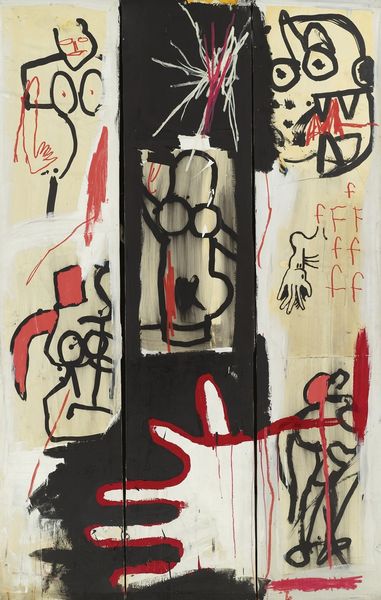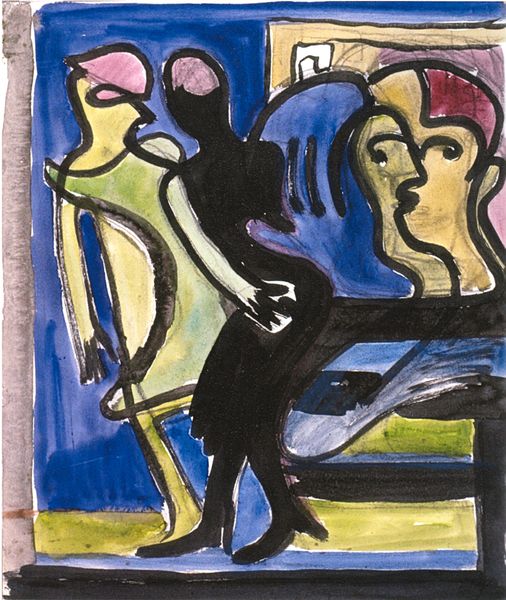
Copyright: Modern Artists: Artvee
Curator: Here we have Pablo Picasso's 1949 painting "Claude à deux ans," an oil-on-canvas work now displayed in the Musée National Picasso. Editor: My immediate impression is a rather disorienting sense of childhood—the colours are playful, yet the flattened perspective and distorted forms evoke a strange anxiety. Curator: Indeed, Picasso's Cubist approach is very evident. We see multiple perspectives collapsed onto one plane, fracturing the image of his son. Note the geometric shapes throughout—the squares behind the child, the almost abstracted rendering of the toy horse. It's as though he's dismantling reality, then reassembling it from a child’s point of view. Editor: Precisely. I'm struck by the color palette. The combination of vivid blues, reds, and purples seems childish, almost like the inside of a nursery, but the lack of smooth blending gives a somewhat dissonant feeling, don’t you think? The bold lines certainly highlight his distinctive, assertive touch. Curator: The symbolic import of the colours, shapes and distorted subject shouldn't be ignored. The somewhat crudely rendered toy could also suggest the naive vision that is not yet corrupted or structured according to societal values and aesthetics, like a cultural tabula rasa. Is Picasso saying the child is born into an abstract and shifting landscape of culture, ripe for impression and creation? Editor: That’s insightful. Also, consider the recurring motifs: the vertical lines and squares suggesting boundaries and limitation are also very suggestive for our understanding. Childhood is not free in his mind: this has great social implications. It’s a dynamic, expressive piece that certainly transcends mere representation. Curator: A fascinating testament to Picasso's ability to fuse personal emotion with formal experimentation and psychological awareness. Editor: It leaves us questioning, certainly, what exactly we understand a 'child' to mean.
Comments
No comments
Be the first to comment and join the conversation on the ultimate creative platform.
